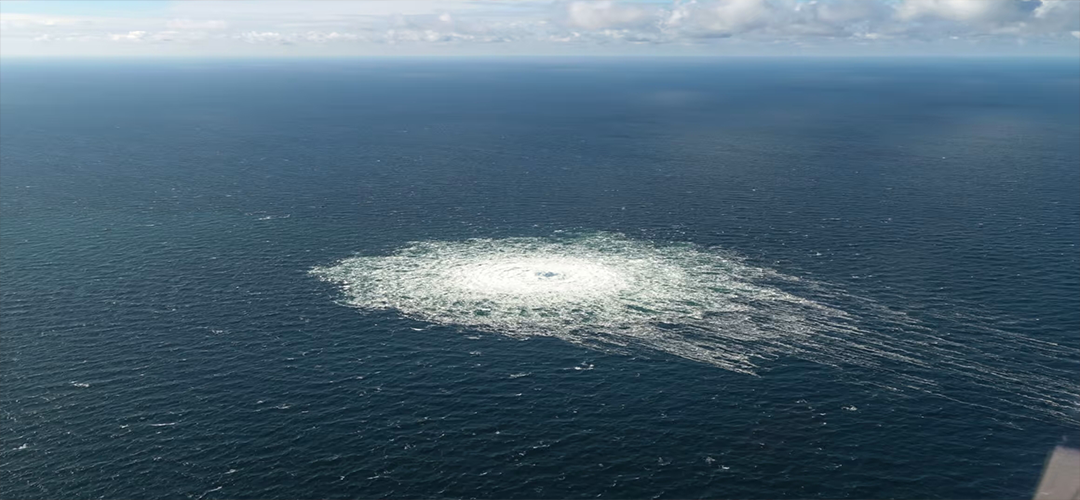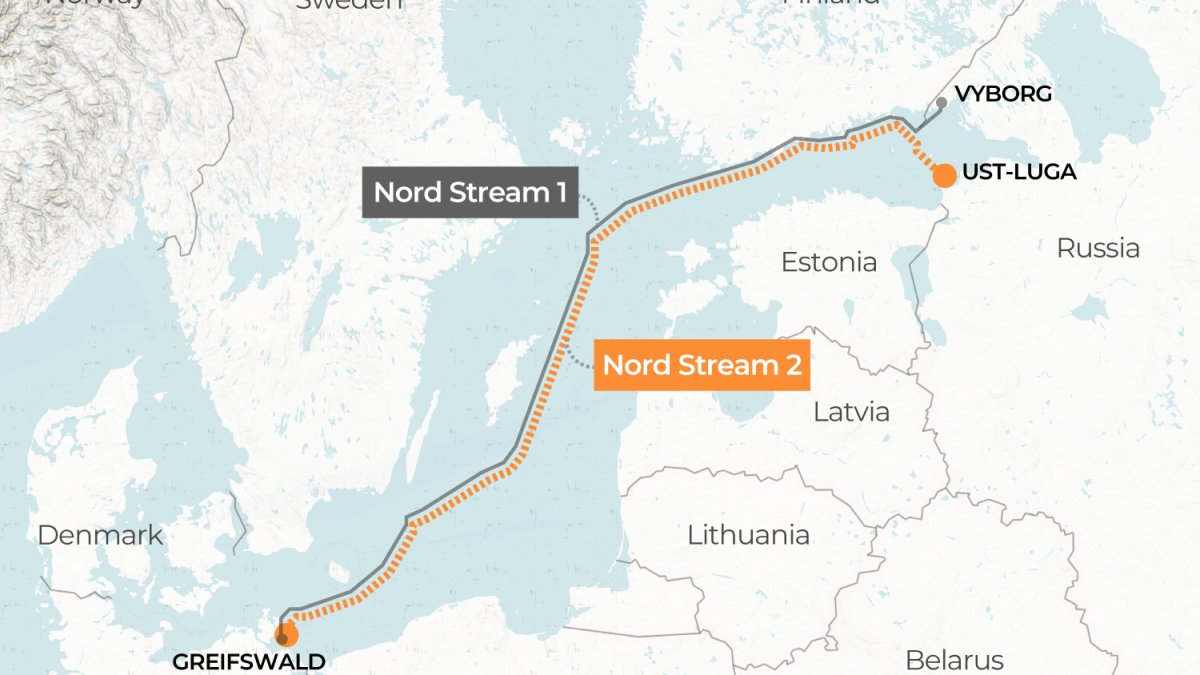SHUTTING THE GAS TAP
October 1, 2022 | Expert Insights

The explosions in the Nord Stream 1 and 2 pipelines in the Baltic Sea resulted in what could amount to the largest-ever single release of methane gas into the atmosphere. What will be the potential impact in terms of the environment and geopolitics?
Background
The onshore portion of the Nord Stream Gas Pipeline (NSGP) spans roughly 917 kilometres in Russia. The remaining portion is a maritime gas pipeline from Portovaya Bay (Vyborg) to the German coast beneath the Baltic Sea (at Greifswald). These marine gas pipes made gas supplies to the UK, Finland, and Sweden possible.
More than one trillion cubic metres of estimated gas reserves, including 700 billion cubic metres of proven reserves, are located in the Yuzhno-Russkoye field. The field's construction is thought to have cost $1 billion. Additional gas supplies are also fed to the NSGP from fields in the Yamal Peninsula, Ob-Taz Bay, and Shtokmanovskoye.
Initially, the first pipeline, which had a 27.5 billion cubic metres per year capacity, was used to transport gas. The aggregate annual gas supply capacity of the NSGP increases to 55bcm with the commissioning of the second pipeline. There are two 1,224-kilometer pipelines. By mid-2006, the first 100 km of the Leningrad region's gas pipeline had been laid by Gazprom.
The pipe has a 1,220mm (48 in) diameter, a 38 mm wall thickness, and a 220 bar working pressure. A service platform is 90 kilometres northeast of the island of Gotland in the Swedish Economic Zone. The platform is utilized for pipeline upkeep and service, including the launching and receiving testing and diagnostic equipment, controlling gas characteristics, and positioning of isolation equipment (valves).

Analysis
The explosions in the Baltic Sea were first detected by seismic monitors in Sweden, Norway, and Finland. It was quickly discovered that two pipelines transporting Russian natural gas supplies to Europe had been destroyed. The pipes, known as Nord Stream 1 and Nord Stream 2, connect Germany and Russia. Two ruptures on the Nord Stream 1 pipeline and one on the Nord Stream 2 pipeline were discovered.
Given that the Russian supply had already been cut off, the impact on Europe's energy calculations is limited in the short term. However, over the long term, the damage could impact natural gas prices, pushing inflation and placing pressure on the continent amid the ongoing conflict in Ukraine and an energy war with Russia.
The scenario with the Nord Stream pipelines is considerably different and less locally destructive. The possibility of an undersea pipeline sabotaging conjures visions of the 1989 Exxon Valdez disaster or even the Deepwater Horizon oil leak from 2010. However, the situation is not as dire; since Instead of crude oil, natural gas is transported through pipelines, and the gas will swiftly climb through the water column and escape into the atmosphere.
Still, there are consequences to natural gas leaks. Methane, a greenhouse gas with a much greater ability to warm the earth than carbon dioxide, makes up most of the gas. Besides, 300 million cubic metres is not negligible – around 200,000 tonnes of methane would be released with each Nord Stream gas release. According to a GHGSat official who monitors methane emissions through satellite, the leak grew at about 500 metric tonnes per hour. The impact on the climate could be reduced if some of the methane were converted by bacteria in the water to carbon dioxide. Still, experts have cautioned that this may not be possible since the water may be too shallow and the release too sudden and rapid.
Counter View
There is still some anticipation regarding the precise amounts of methane released and whether there are other, more specific ecological effects. In the larger picture, this would probably only account for a small portion of the world's annual methane emissions, reaching as high as 500 million tonnes annually.
Assessment
- Even if there was a political determination to get the Nord Stream pipelines online, the scale of the damage makes it improbable that they will be able to transport any gas to Europe this winter.
- The release of the greenhouse gas methane would harm the climate, but the leak would only influence the ecosystem in the immediate area where the gas plume in the water column is located. Unlike crude oil, the spill will not spread over a vast area.
- There is a presumption by analysts that the leaks may result in the permanent closure of both lines, depending on the extent of the damage. Who would benefit from this act is a matter of conjecture, even though conspiracy theories abound.








Comments